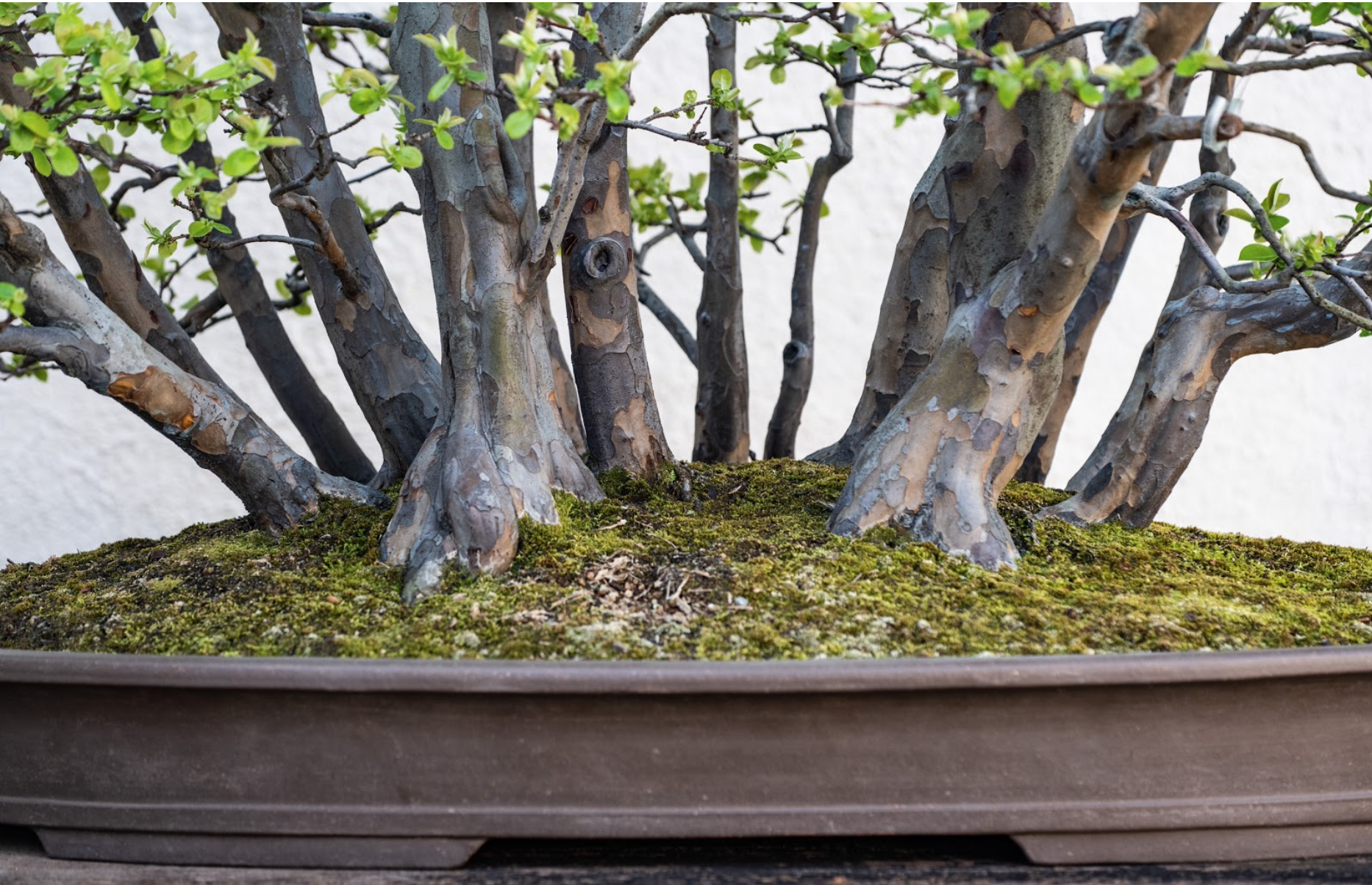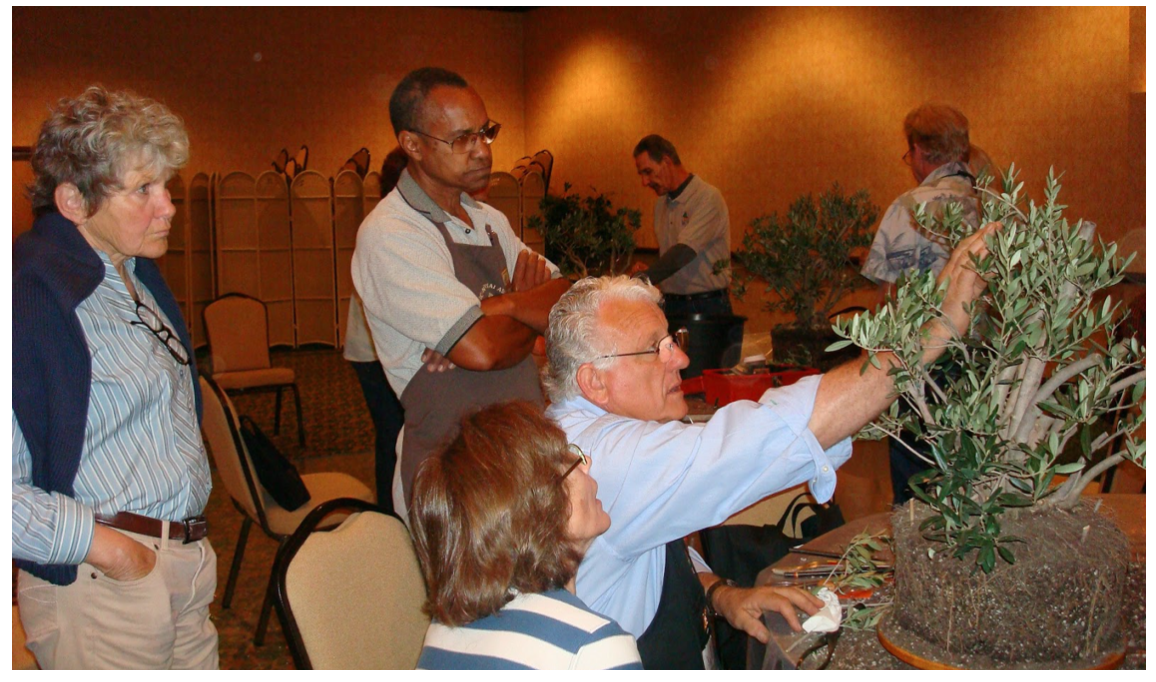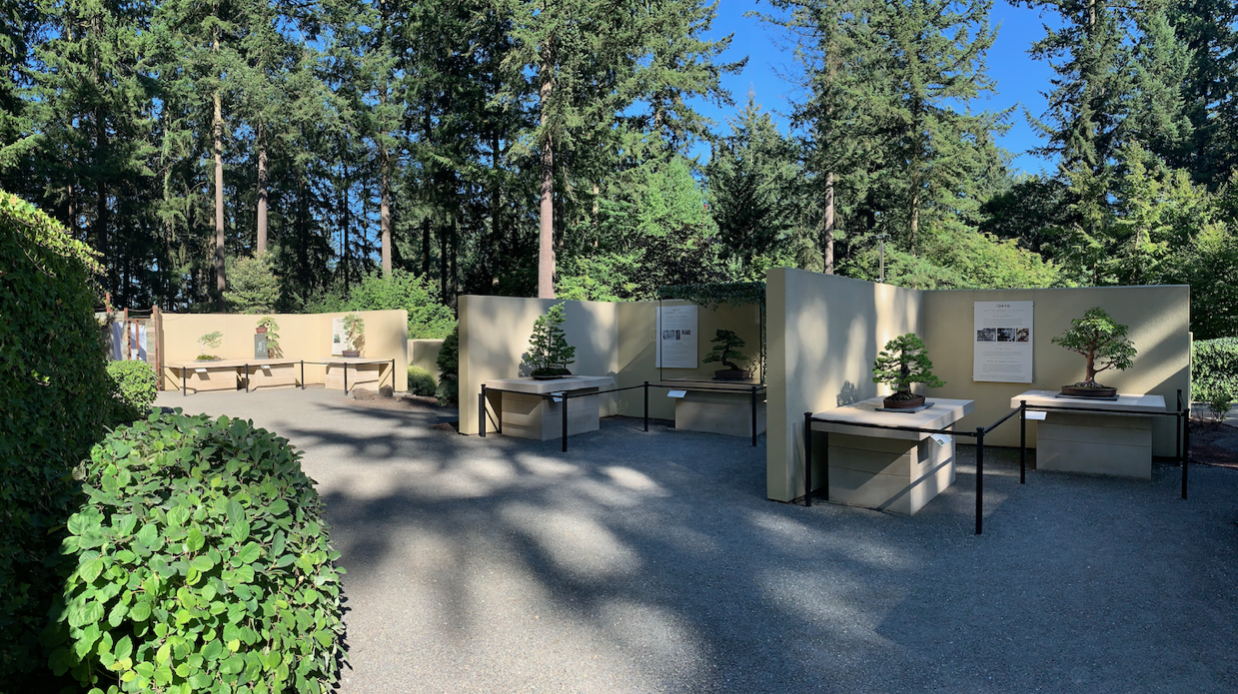The quince forest planting, photo by Stephen Voss 2021
One alluring aspect of bonsai is the ability to recreate an entire forest from a far away place all in a single pot. In this month’s Historical Tree Spotlight, we draw attention to a planting of Chinese quinces (Pseudocydonia sinensis) at the National Bonsai & Penjing Museum that does just that.
Former curator Warren Hill began this arrangement in 1975, growing the centermost and now-largest tree from nursery stock to produce quinces – a yellow, apple- or pear-like fruit (pronounced “kwins”) that is usually not eaten raw but is used in desserts or teas. He then collected seeds from the fruit of that parent tree to grow the surrounding trees.
Hill combined the parent and offspring trees to create the planting in 2002 and donated the arrangement to the Museum in July 2013.
Museum Curator Michael James said the trees are relatively similar in age, but Hill grew them to different sizes and shapes by paying special attention to his thickening technique.
“It’s really about how much foliage each tree is allowed to have,” James said. “Allowing a tree’s branches to really extend before cutting them off allows the trees to thicken faster, but trimming branches fairly often keeps a tree smaller.
Now that the forest planting is fairly developed, Museum staff keeps the foliage throughout the forest planting at a similar vigor to balance the leaf size with the trunk sizes and ensure the trees are proportional to each other.
“Maintaining this difference in height and thickness really drives home the true representation of how trees look in a natural forest environment,” James said.
He said the deciduous planting requires a lot of sun and a fair amount of water compared to other trees in the collection. The trees in Hill’s planting are some of the first to flower in the spring, and the quinces’ bark changes colors and textures throughout the year. But James said the planting peaks in the summer, when the bark exfoliates.
Warren Hill and the Chinese quince forest planting, photo credit to Walter Pall
“The smooth bark in the winter and early spring is a mixture of grays and tans and different browns, even greens,” he said. “But when that exfoliates and those colors flake off, it gives way to rosy oranges and pinks that look as if someone lit a match inside the heart wood.”
In the fall, if the flowers are pollinated, the trees grow their quinces, which are so large compared to their branches that Museum staff rarely leave more than one fruit on the composition each year.
First Curator’s Apprentice Sophia Osorio said the planting is protected in the greenhouse during the colder months, so the quinces don’t always have access to pollinators. Museum staff have to manually pollinate trees, taking a soft, bristled brush from flower to flower to transfer the pollen. Osorio said they will pick a few flowers to enlarge throughout the year and eventually grow fruit, but that takes some extra planning.
“We have to be careful that the branch we allow to flower is in the right place in the composition and will be able to support that fruit, yet not swell too much from developing,” she said.
Osorio added that the branch often has to be supported with wire because a fruit could easily snap a bonsai branch off by the time it matures in fall.
“The fruit draws tons of nutrients up from the roots, through the trunk, through the branch and to itself,” she said. “Due to that immense transfer of water and energy, the branch with the fruit is going to thicken a lot more than the others.”
Photo by Stephen Voss, 2021






























